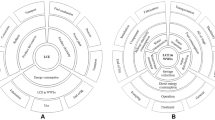Abstract
Goal, Scope and Background
This paper discusses the merging of methodological aspects of two known methods into a hybrid on an application basis. Water shortages are imminent due to scarce supply and increasing demand in many parts of the world. In California, this is caused primarily by population growth. As readily available water is depleted, alternatives that may have larger energy and resource requirements and, therefore, environmental impacts must be considered. In order to develop a more environmentally responsible and sustainable water supply system, these environmental implications should be incorporated into planning decisions.
Methods
Comprehensive accounting for environmental effects requires life cycle assessment (LCA), a systematic account of resource use and environmental emissions caused by extracting raw materials, manufacturing, constructing, operating, maintaining, and decommissioning the water infrastructure. In this study, a hybrid LCA approach, combining elements of process-based and economic input-output-based LCA was used to compare three supply alternatives: importing, recycling, and desalinating water. For all three options, energy use and air emissions associated with energy generation, vehicle and equipment operation, and material production were quantified for life-cycle phases and water supply functions (supply, treatment, and distribution). The Water-Energy Sustainability Tool was developed to inform water planning decisions. It was used to evaluate the systems of a Northern and a Southern California water utility.
Results and Discussion
The results showed that for the two case study utilities desalination had 2–5 times larger energy demand and caused 2–18 times more emissions than importation or recycling, due primarily to the energy-intensity of the treatment process. The operation life-cycle phase created the most energy consumption with 56% to 90% for all sources and case studies. For each water source, a different life-cycle phase dominated energy consumption. For imported water, supply contributed 56% and 86% of the results for each case study; for desalination, treatment accounted for approximately 85%; for recycled water, distribution dominated with 61% and 74% of energy use. The study calculated external costs of air pollution from all three water supply systems. These costs are borne by society, but not paid by producers. The external costs were found to be 6% of desalinated water production costs for both case studies, 8% of imported water production costs in Southern California, and 1–2% for the recycled water systems and for the Northern California utility's imported water system.
Conclusion
Recycling water was found to be more energy intensive in Northern than in Southern California, but the results for imported water were similar. While the energy demand of water recycling was found to be larger than importation in Northern California, the two alternatives were competitive in Southern California. For all alternatives in both case studies, the energy consumed by system operation dominated the results, but maintenance was also found to be significant. Energy production was found to be the largest contributor in all water provision systems, followed by materials production. The assessment of external costs revealed that the environmental effects of energy and air emissions caused by infrastructure is measurable, and in some cases, significant relative to the economic cost of water.
Recommendation and Perspective
This paper advocates the necessity of LCA in water planning, and discusses the applicability of the described model to water utilities.
Similar content being viewed by others
Author information
Authors and Affiliations
Corresponding authors
Rights and permissions
About this article
Cite this article
Stokes, J., Horvath, A. Life Cycle Energy Assessment of Alternative Water Supply Systems (9 pp). Int J Life Cycle Assessment 11, 335–343 (2006). https://doi.org/10.1065/lca2005.06.214
Received:
Accepted:
Published:
Issue Date:
DOI: https://doi.org/10.1065/lca2005.06.214




